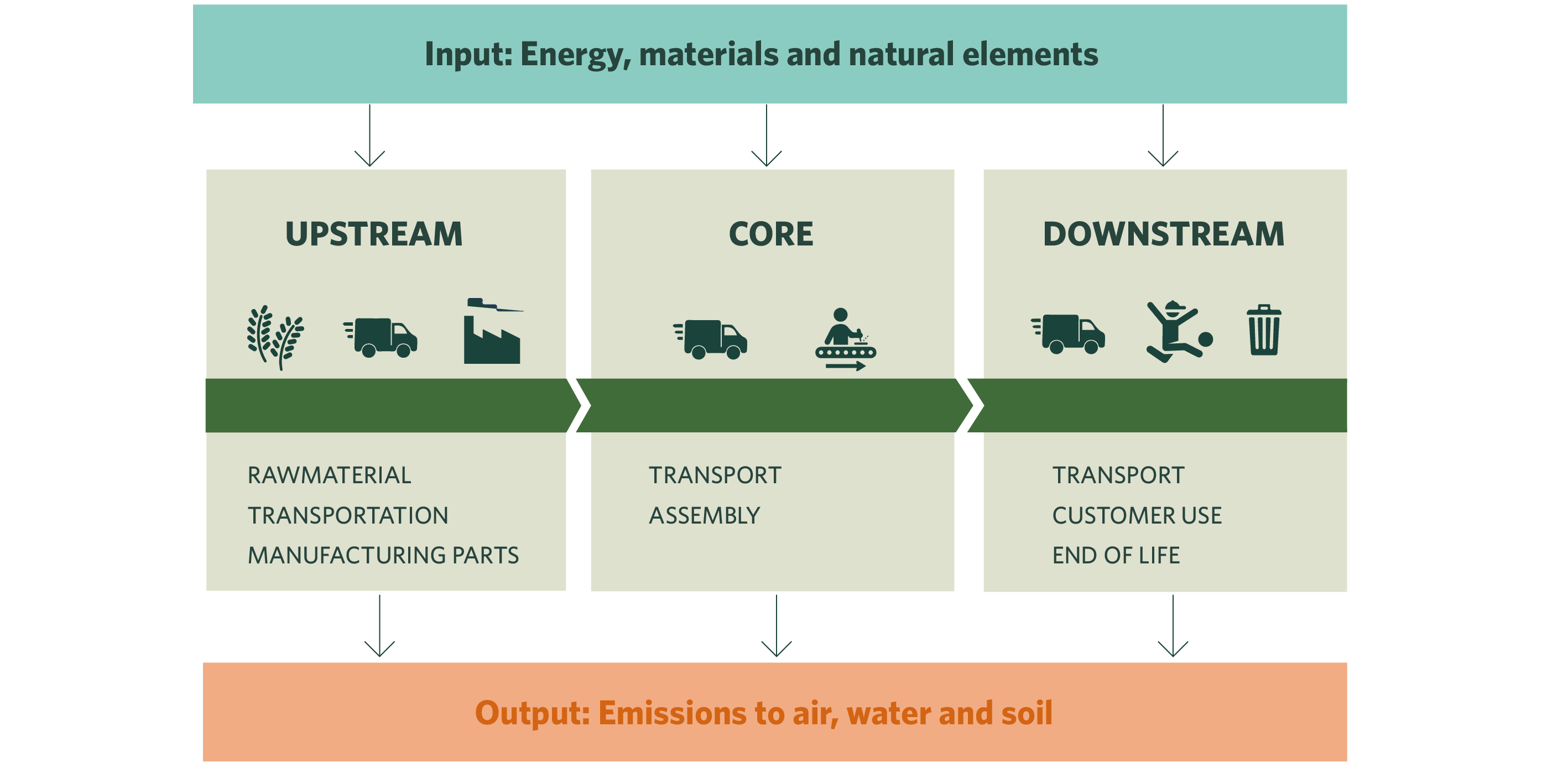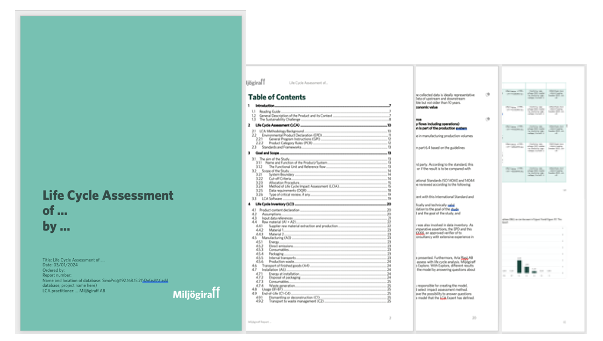Life Cycle Assessment – A method for measuring environmental impact
To understand the potential environmental impact of the manufacturing and use of products, life cycle assessment (LCA) has become an established method. With a life cycle analysis, you can quantify environmental impacts and identify opportunities for improvement. The LCA method is a systematic way to model life cycles and creates a credible assessment of potential environmental effects. The results from a well-conducted life cycle assessment provide a solid foundation for the development of strategies and communication about environmental issues. By integrating the life cycle perspective into the business strategy, value can be created both in the short and long term.
Improved Products and Business Strategies
For us, it is important that the results contribute to activating and motivating our clients to implement improvement measures so that it creates value. Life Cycle Assessment (LCA) is a powerful method that creates value in several ways.
- In product development the results can help you evaluate design decisions and identify which components and materials have the greatest environmental impact By prioritizing actions in these areas, you can achieve the best results.
- Improve the dialogue on sustainability issues with suppliers and customers. The method provides structure and increases transparency in your value chains. It can be used as a tool to increase suppliers’ engagement in sustainability issues and create a common goal.
- Life cycle analysis is also the basis of EPD (environmental product declaration)
- Optimize your sustainability strategies. Taking a life cycle perspective provides a solid foundation and relevant sustainability reporting, allowing you to identify measurable goals that you can track and report on in your sustainability report.
- Identify business possibilities by identifying areas where you can reduce environmental impact while increasing profitability.
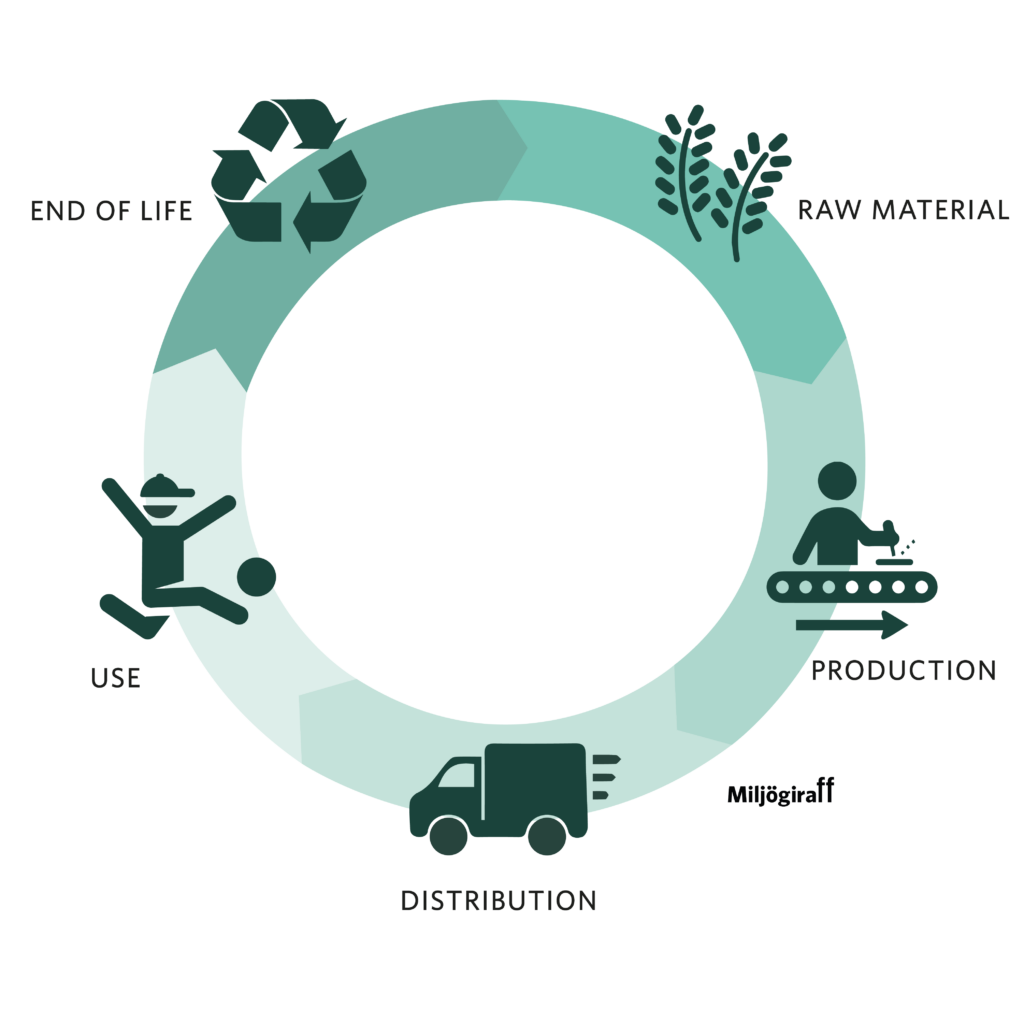
LCA according to ISO 14040-44
We work according to the ISO 14040 standard and conduct the analysis in four steps: defining the goal and scope, inventorying all relevant flows, evaluating and interpreting the results. First, the goal of the study is defined and which parts of the product’s life cycle are to be included. In the inventory step, relevant data about, for example, materials, energy consumption, and emissions from each part of the life cycle are identified and collected. In the environmental assessment, the contributions of different aspects to environmental impact are calculated. In the interpretation, the environmental impact and the robustness of the results are evaluated. Recommendations and conclusions about the results are then formulated.
Examples of life cycle assessments
But as mentioned, life cycle assessments are not limited to products. We can help you analyze services, travel, work methods, processes, or entire organizations. What all these different types of life cycle assessments have in common is the holistic perspective.
Life Cycle Assessment (LCA) can be a complex analysis, with many parameters that influence each other. When we conducted analyses and developed EPDs for 24 types of windows for Elitfönster, for example, we calculated how much energy they save during the time the windows are in place in the building where they are installed. And for Lintex we compared various possible materials in partitions and developed a calculation model that can be used in future calculations.
Polykemi
To understand the environmental impact of Polykemi’s materials, we at Miljögiraff have conducted a life cycle assessment of all the constituent polymers, additives, and pigments.
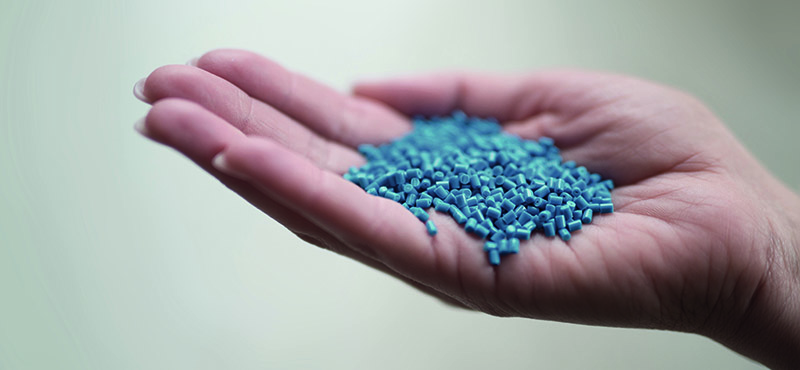
Presto
Presto’s fire protection with a take-back system
results in up to 53% less climate impact. The collaboration led to strategies for product development with new materials and insights into components.
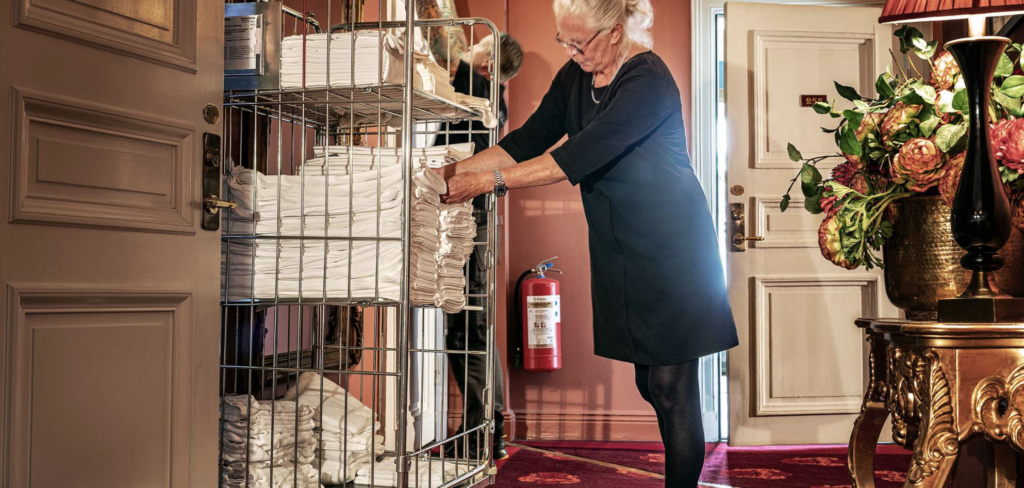
Want to know more?
We would be happy to tell you more about life cycle analyses and how you can create value in your business.

